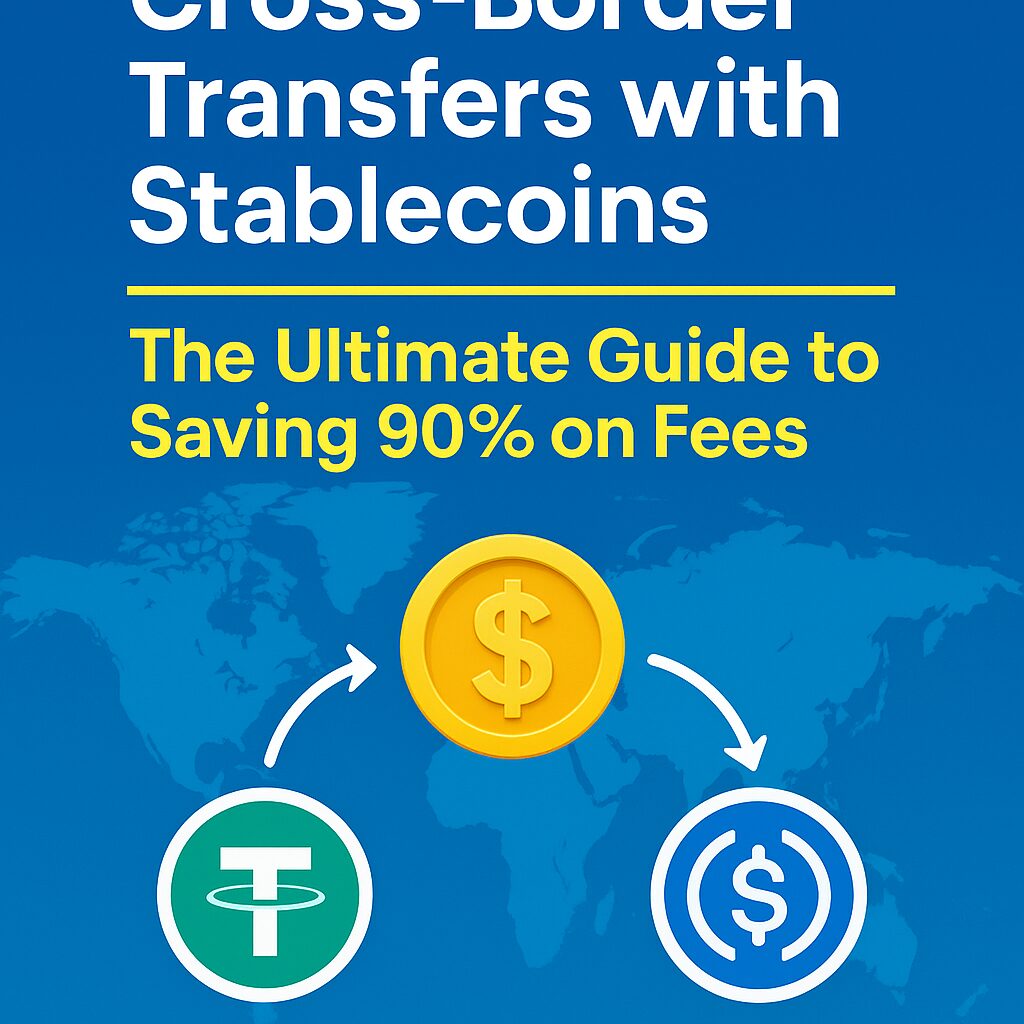Sending money across borders has traditionally been slow, expensive, and frustrating. Whether you’re a freelancer receiving payments from overseas clients or a family member sending remittances, you’re likely familiar with the high fees, long processing times, and unpredictable exchange rates.
But there’s good news: stablecoins are revolutionizing international transfers. With minimal fees, near-instant settlement, and transparent pricing, stablecoins offer a smarter way to move money globally — without relying on legacy banks or high-cost intermediaries.
In this guide, you’ll discover how to use stablecoins to send and receive money internationally, which networks offer the lowest costs, and what platforms are best suited for safe, legal transactions.
2. Traditional Cross-Border Transfer Problems
International wire transfers typically pass through multiple intermediaries — SWIFT networks, correspondent banks, and local clearinghouses. This results in:
- High Fees: Transfer costs often range from $20 to $80 per transaction.
- Slow Processing: It can take 2–7 business days to receive funds.
- Currency Conversion Losses: Hidden spreads in exchange rates can eat up 1–3% of the value.
- Lack of Transparency: It’s hard to know where your money is or when it will arrive.
- Exclusion of the Unbanked: Millions of people can’t access global payments due to local banking restrictions.
These inefficiencies are particularly harmful for digital workers, small businesses, and families relying on overseas remittances.
3. How Stablecoins Solve These Issues
Stablecoins offer a radically better alternative to traditional banking systems. Here’s how:
- Minimal Fees: Transfers cost as little as $0.01, especially on networks like TRC-20 or BEP-20.
- Fast Settlements: Most transactions settle within seconds to minutes.
- No Banking Hours: Transfers happen 24/7, including weekends and holidays.
- Transparent Ledger: Blockchain lets you track your transfer at every step.
- No Currency Conversion: Pegged to the USD or other major fiat currencies, there’s no hidden FX cost.
Let’s say you’re sending $1,000 to a contractor in another country. With traditional banking, they might receive $930 after fees and delays. With stablecoins, they can receive the full amount — instantly.
4. Best Networks and Platforms for Transfers
Best Networks for Transfers
- TRC-20 (Tron): Ultra-low fees and fast speeds. Popular for remittances.
- BEP-20 (Binance Smart Chain): Low fees, wide exchange support.
- Polygon (MATIC): Fast, scalable, and very affordable.
- Arbitrum / Optimism: Layer-2 Ethereum solutions with reduced gas costs.
Avoid Ethereum Mainnet for small transfers — high fees make it impractical.
Top Platforms to Use
- Binance: Global support, fast conversions, wide stablecoin options.
- Kraken: Excellent for bank withdrawals in supported countries.
- OKX / KuCoin: Good for TRC-20/BEP-20 networks with high liquidity.
- Bitget / MEXC: Reliable for low-fee stablecoin trades and withdrawals.
- Trust Wallet / Metamask: Use for self-custody and peer-to-peer transfers.
Use platforms that support your local withdrawal method — such as mobile money, bank transfer, or crypto card — for maximum convenience.
5. Real-World Use Cases
Here are some real-life examples of stablecoin-powered international transfers:
- Freelancer in Kenya: Receives USDT on Tron network from U.S. clients and converts to local currency via Binance P2P in minutes — with almost no fees.
- Overseas Worker in South Korea: Sends earnings to family in the Philippines using USDC on Polygon, cutting transfer fees by 95%.
- Startup in Germany: Pays remote developers in Argentina and Vietnam in USDC using Arbitrum, reducing payroll delays and banking overhead.
These aren’t hypothetical — this is already happening at scale. Millions are switching to stablecoins for reliable, affordable global transfers.
6. Risks and Safety Tips
Despite the advantages, international transfers using stablecoins carry some risks:
- Wrong Network or Wallet: Sending to an incompatible address can result in lost funds.
- Scams on P2P platforms: Always verify reputation and use escrow where possible.
- Regulatory Restrictions: Some countries restrict crypto withdrawals or require reporting.
Safety Tips:
- Double-check wallet addresses and network types.
- Use reputable platforms with KYC.
- Start with small test transfers before sending large amounts.
7. Conclusion
Stablecoins are rewriting the rules of international money transfers. They offer speed, savings, and global accessibility that traditional banks simply can’t match.
If you’re sending or receiving funds across borders, there’s no smarter way than with stablecoins — as long as you follow security best practices and use the right tools.
Skip the fees, dodge the delays, and take control of your cross-border payments.
